
Terri’s Tips: Review to renew

Like many college educators, I’m wrapping up my term and thinking about next term’s classes. During this time, I want to be able to answer a couple of questions quickly and easily:
- How well did my students perform using Revel® this term?
- How can I change my design to improve my students’ success next term?
Thankfully, Revel has useful tools to help instructors answer these questions.
Seeing how your students performed
For a glance into how my students did this term, I can check the class performance in the “Dashboard” view. When I hover over “View score details,” I can see how the class performed on each type of assessment I assigned.
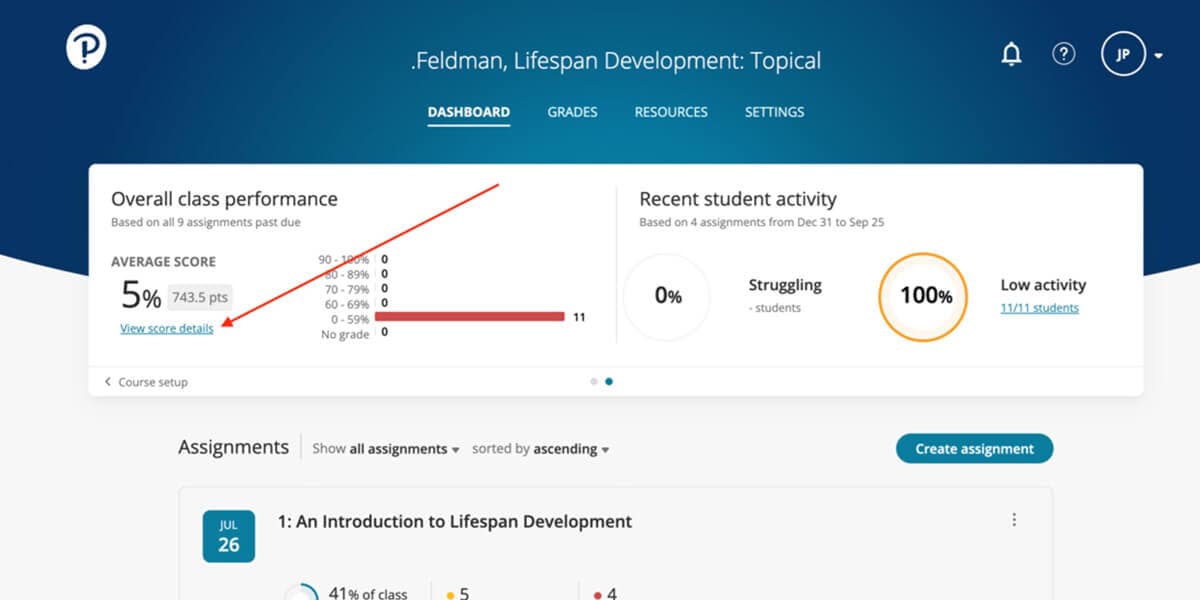
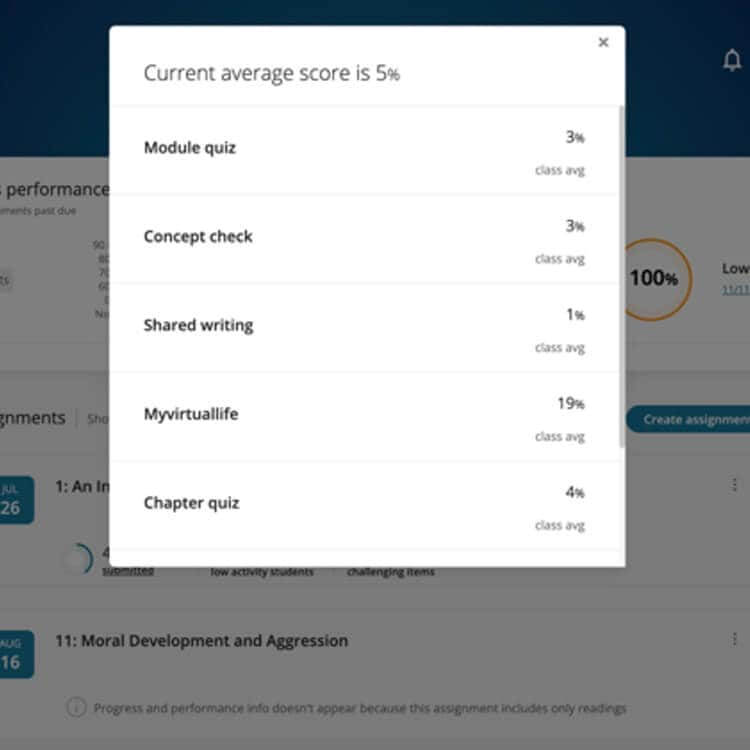
I can also hover over the “Struggling”” and Low Performing” student gauges, and the students falling into those categories will appear. Plus, I have the ability to email them directly from that drop down. If you didn’t use this feature this term, you might consider doing so next term to increase student engagement.
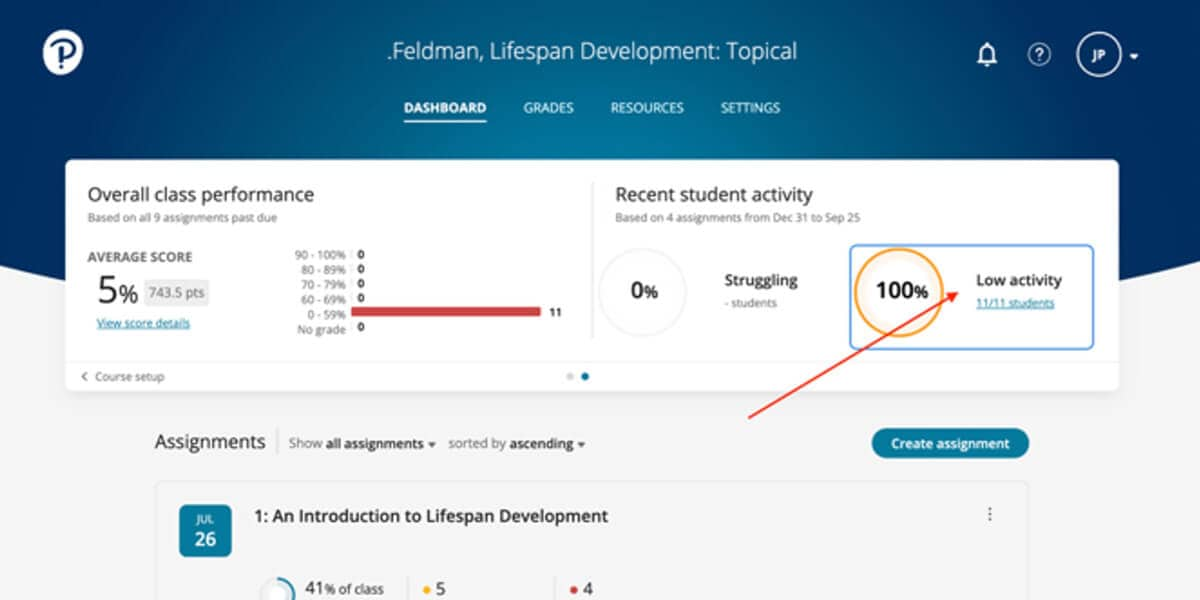
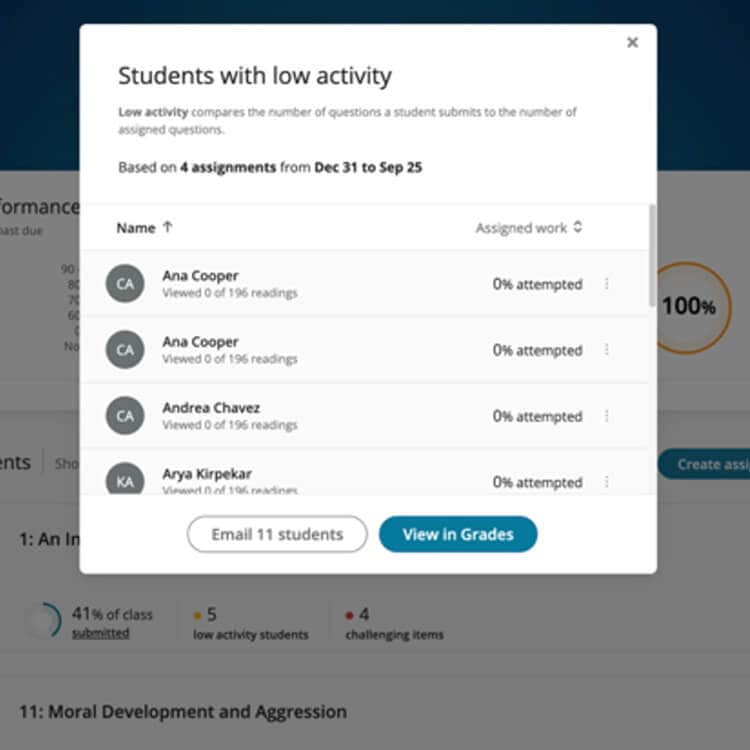
Scrolling below the dashboard, I can quickly see all the assignments and due dates, along with additional information about those specific assignments such as “challenging items.” I’ll talk about that detail a bit later.
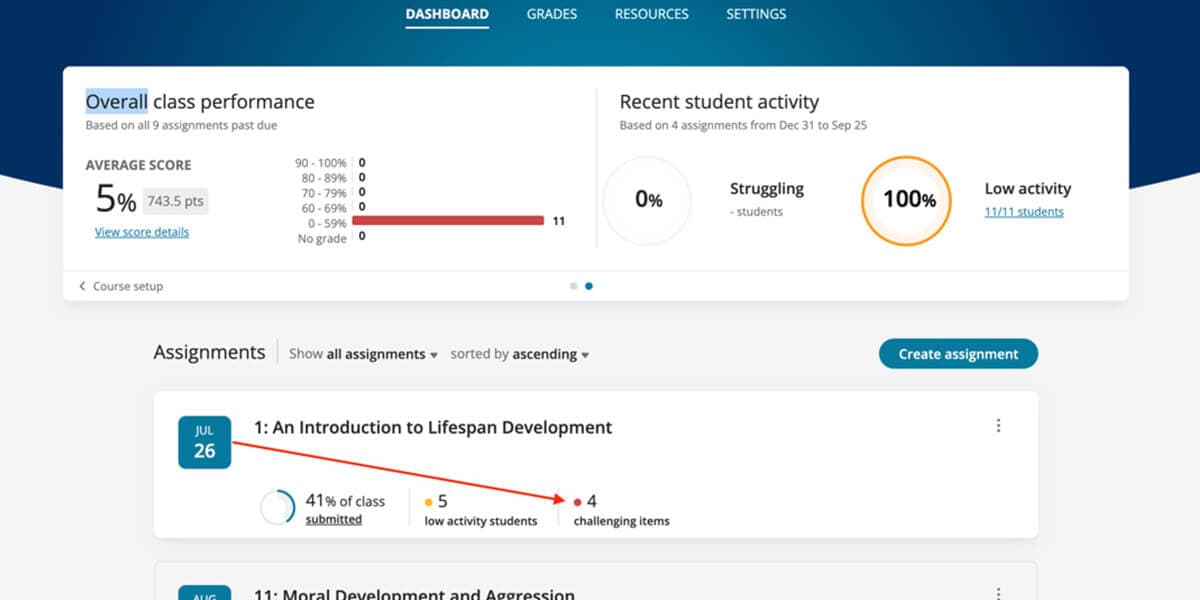
I’m able to see classroom aggregate data on these assignments in greater detail by using the “Grade” view and selecting “Assignment” view. I can then drill down to see how students did on a given weekly assignment and on any of its components.
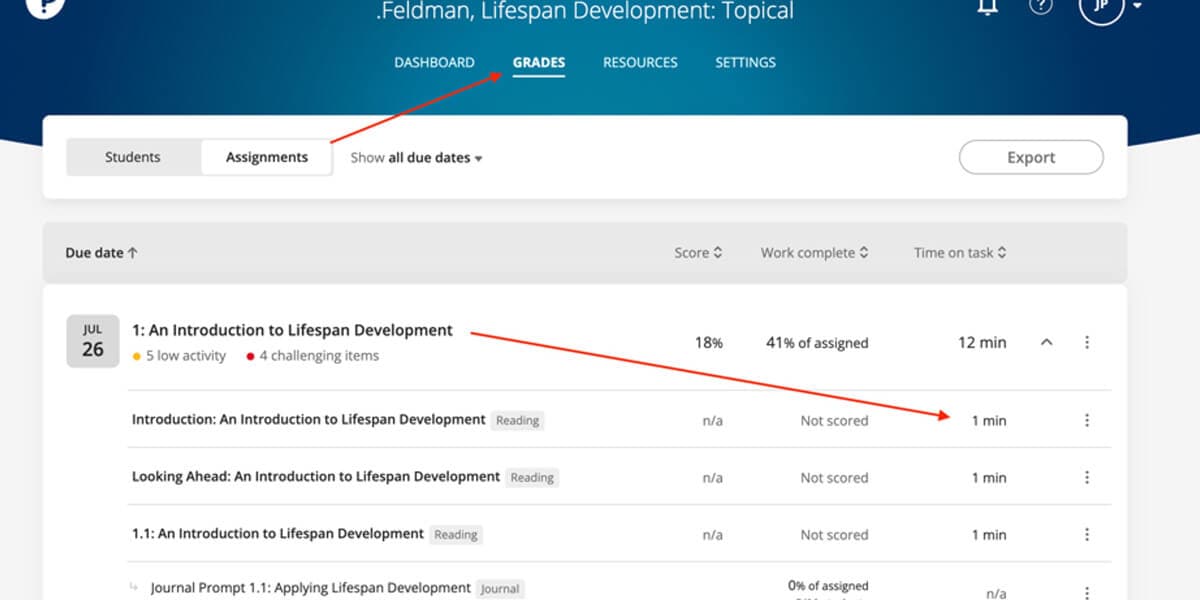
Revising course design to boost student success
Now that I have some numbers in my hands that tell me how my students performed this term, what can I do next term for even better results?
Let’s think about what these numbers might imply or infer. When I review assessment data, I ask myself if there are any settings or scoring policies that I might change to increase both engagement and comprehension.
When I hover over the view score details that show me the aggregate scores for students on each type of assessment I assigned, I can take note of the assessment types that received low scores. This may indicate a lack of understanding or a lack of participation.
Drilling into the details of some of those types of assessments within the assignment view in “Grades,” I may see a lack of participation rather than just low scores. This indicates that maybe I should assign greater value for these types of assessments if I feel they are sound activities for students who are trying to become more proficient with the content.
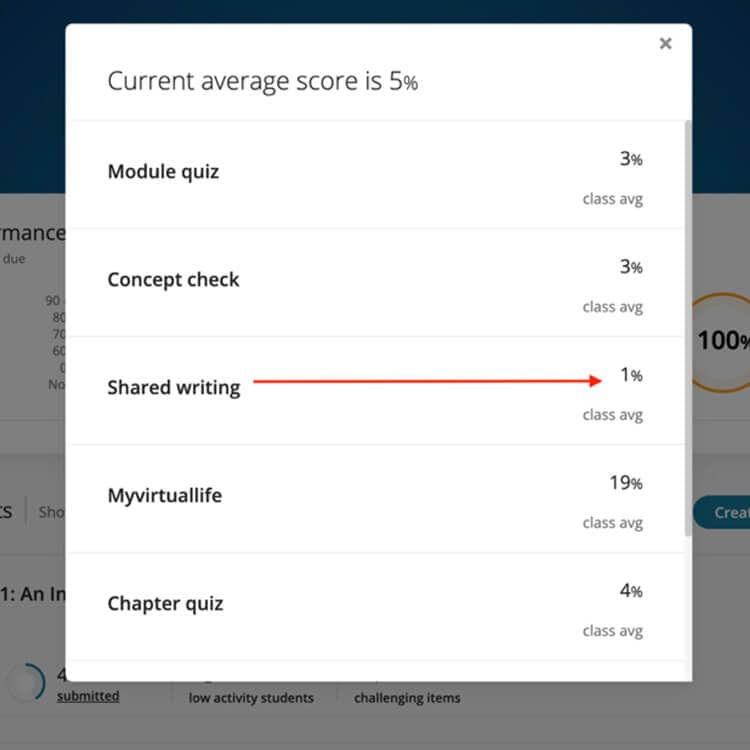
Increasing the weight of certain assessments might incentivize students to complete them. Allowing fewer attempts for the Revel module or chapter quizzes might reduce students’ attempts to complete the quizzes without fully understanding the concepts they should have read just before taking the quiz.
I might also determine that I’d like to exclude certain types of assessments next term if I feel their value is not high enough to justify students expending the energy and time it takes to complete them. I might increase compliance on the assessments I feel are more robust in helping students acquire the knowledge needed to become proficient in my courses’ required outcomes.
Reaching out to struggling students
Using the “low activity” or “struggling” student data made a dramatic difference in my classes, both face-to-face and online. It takes almost no time for me to email the students in these categories. I do it in the morning over a cup of coffee as I review their weekly progress.
For three years I have conducted my own little efficacy study by examining the effect of using this intervention strategy with my low-performing students.
Early on Monday mornings after Sunday night due dates, I’d drop each student a quick email stating I’d noticed they were having some issues completing their work in Revel from the previous week. I’d tell them to contact me if I could be of assistance with anything.
This simple, very quick intervention was so telling during Covid. Students would email me back and share things like they had little connectivity at home with four siblings using the same Wi-Fi, or they had lost their homes and were in the process of moving. There were many issues that I had no ability to resolve, but it could put skin on the computer by letting my students know I cared and connected with their struggles. And even if the student was simply slacking a bit, they also learned that I was an active presence in the online classroom. Human connections between students and teachers, and between peers, are often the variables that increase persistence to completion.
Over three years this simple intervention led to an increase of slightly more than 25% retention in my online classes (It was 13% in my face-to-face classes, which was kind of embarrassing, as I thought I was the rock star in my face-to-face classes, and they stayed in the course to see me). Apparently, being engaged with the material taught by the text outside of class was equally important.
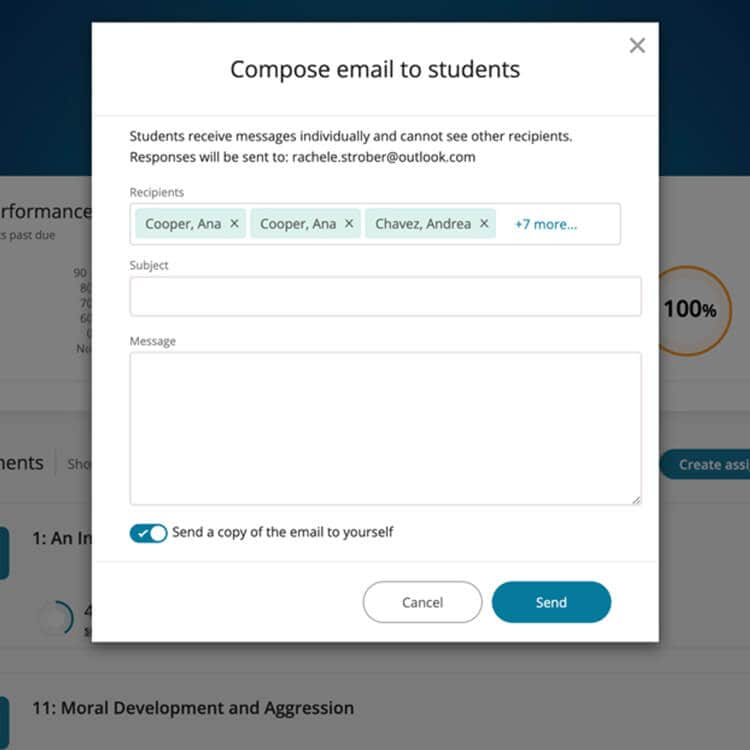
Identifying “challenging items” and intervening effectively
When I talk about scrolling beneath the dashboard to the assignments to find “challenging items” I am referring to questions on the quizzes that much of your class did not answer correctly on the first try. This might indicate that this is a difficult concept to grasp by just reading the material.
When you dig deeper, you are able to see the exact question/concept that your students struggled with. This information has led me to add some of my own content to the Revel content to increase students’ understanding. For instance, with psychology, operant and classical conditioning are concepts often confusing for intro to psych students. I have added material in my LMS, in class, or in Revel by using the highlighting feature and sharing a note to students to increase their understanding of that difficult concept.
If you go to the “Resources” tab and open your instructor Revel book. You can select the section you found for challenging items. You might highlight that section, add a note or even a URL (this will be an active link in your students’ notes.) You might add a TED Talk, or as I did with my psychology students, a link to a YouTube of the Big Bang Theory where the guys are using operant and classical conditioning to train their girlfriends. When you share notes like this, they will appear to your students in their notebooks, and they can use your notes as study guides.
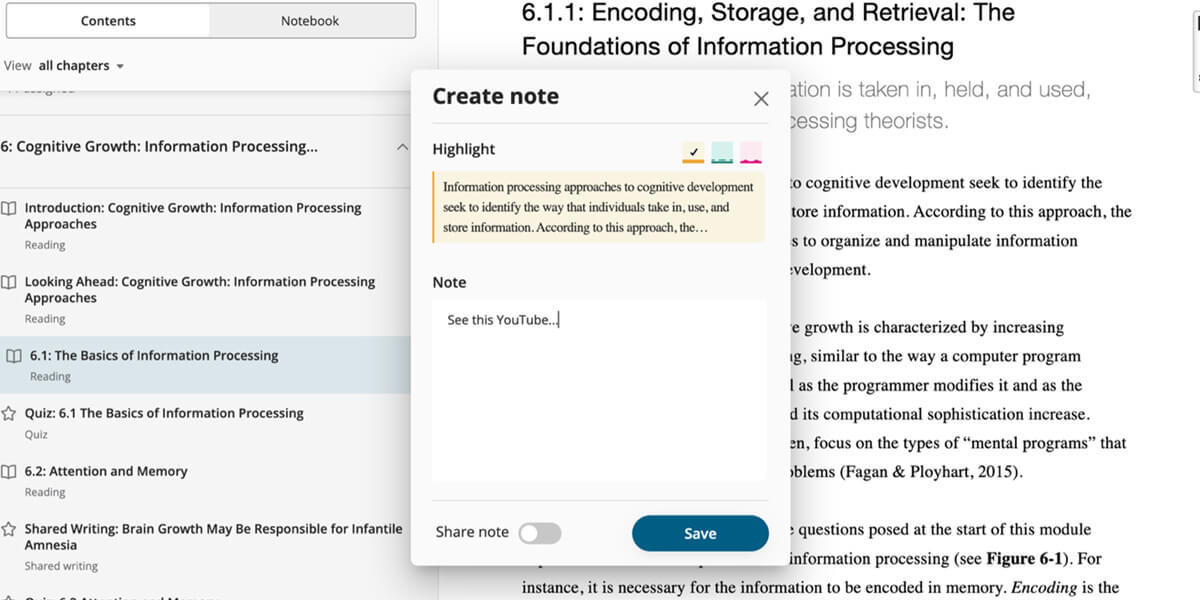
Optimizing assignment timing
Finally, I like to look at the trends in the term by scanning assignment dates, scores, and participation. This can inform me about seasonal changes in student performance, such as a mid-term slump or holiday break fever, times in our terms when students historically perform below their usual levels. Interventions to increase student engagement during those “slow performance times” might include reducing the number of assessments or using more active engagement types of assessments during those times, such as asking students to present or work collaboratively to engage them more fully.
These are just a few of the many ways that Revel performance data can inform your course set up for next term. I’m sure there are many additional ways you will find to use these numbers to increase your students’ engagement, performance, and concept mastery.
About the author

Dr. Terri Moore, Eastern Florida State College
A native Floridian, Terri worked in North Carolina for 15 years, directing non-profit agencies primarily in the fields of health care and services. Terri moved into academia where she has taught in higher education for over 19 years. She taught communication courses initially at Guilford Technical and Community College. She completed her master’s degree in communication studies from the University of North Carolina at Greensboro. Returning to her native state, Terri taught communication and college success courses with Polk Community College as she completed her PhD in Psychology with an emphasis in social psychology.
As a dual credentialed professor with Eastern Florida State College, Terri has been teaching both psychology and communication courses for over 13 years, using Pearson products in her classes. She began with MyLab® and continued with Revel, given it expanded the list of authors and developed additional integrations such as Shared Media. She has taught extensively, both in face-to-face and online platforms, a wide range of communication and psychology courses, designing a number of master courses for online programs. She has been a freelance faculty advisor with Pearson for approximately 11 years. Terri made the choice in 2019 to leave full-time academia for full-time employment with Pearson as a Revel faculty advisor for liberal arts.
A skilled presenter with excellent oral and written communication skills, Terri’s preferred research methods are qualitative with a special interest in social psychology and well-being across the life span. Most recently, she published an article based on her research of women choosing to make new committed relationships later in life.



